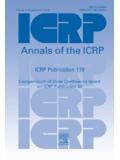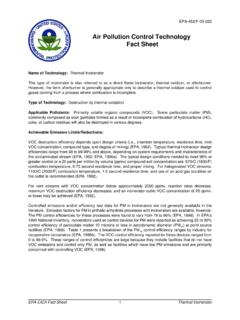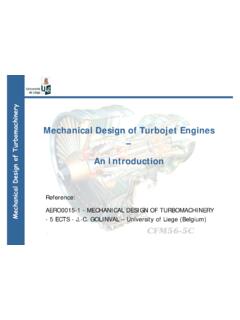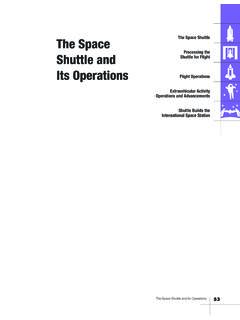Transcription of The 4G robotic UAV
1 The 4G robotic UAV 2 Cover illustration: a computational fluid dynamic (CFD) view of ANAFI Ai, showing the static pressure distribution on the drone (right of the image), and highlighting the air vortices around the drone, at full forward speed (left of the image). ANAFI Ai Parrot 2021 3 Table of contents A naturalist remark .. 5 Flight performances .. 6 Key features .. 6 A cool drone .. 6 aerodynamic performances .. 6 Actuators and 7 Sensors .. 8 Autopilot .. 10 Autonomous flight.
2 12 Flight 23 Hybrid stabilization .. 30 292 tilt range .. 31 4G Connectivity .. 32 Key features .. 32 4G .. 32 Wi-Fi .. 34 Video streaming .. 35 Camera .. 37 Key features .. 37 48 MP sensor .. 37 Lens design .. 37 Video modes .. 38 HDR .. 39 Photo modes .. 39 Settings .. 41 6x zoom .. 42 Photogrammetry .. 43 Key features .. 43 Designed for inspection and mapping .. 44 Harness the power of AI and 4G .. 46 Photogrammetry or LIDAR? .. 52 4 Partner 53 Software Development Kit .. 57 Key features .. 57 Skycontroller 4.
3 68 Key features .. 68 Operations .. 69 Design .. 69 Connectors .. 69 Connectivity .. 69 HDMI .. 69 Battery .. 69 Durability .. 69 Performances .. 70 Quality .. 70 Smart 71 Key features .. 71 Performances .. 71 Functions .. 72 Quality .. 73 Cybersecurity by design .. 74 Key features .. 74 No data shared by default .. 74 FIPS140-2 compliant and CC EAL5+ certified Secure Element .. 74 4G secure pairing and strong authentication ..76 Secure initialization and update ..76 Configuring user keys on the Secure Element .. 77 Digitally signed pictures.
4 77 Transparency and Bug bounty continuous security check .. 77 Data management .. 79 Data collected ..79 Final use of collected data .. 81 Pack .. 82 Pack contents .. 82 Appendix: certification documents .. 83 ANAFI Ai Parrot 2021 5 A naturalist remark In the animal kingdom, there is no known species that has optical sensors distributed around its body. No insect, bird, fish, or mammal has developed a visual perception system of sensors, despite each species needing to detect obstacles or predators in all directions in order to survive.
5 Natural evolution has led to the most widespread and efficient solution. For example: - mobile heads that can be oriented on 3 axes: left/right (yaw), up/down (pitch), and also to a lesser extent with respect to the horizon (roll); - this integrates a unique pair of sensors adapted to the animal's behavior, and installed on a vertical plane of the face for tree-dwelling primates from which we descend, or directed more laterally for equids for example; - the pair of sensors are generally mobile on 2 axes: left/right (yaw axis) and up/down (pitch axis).
6 This visual perception is created of a pair of sensors (the eyes) mobile on 5 free axes (the movements of the head and eyes in their orbits). In biology, we also see this in the evolution of the optic nerve. For most species, the optic nerve is the largest of its kind; it transmits large amounts of information across the body to its cerebral support. It is also a very short nerve made up of a bundle of cerebral fibers. When we apply this to a drone, the link (the bus ) between the sensor and the processor requires an essential exchange of information, which implies optimizing the length of the bus.
7 Anatomically, the head of some species is often detached from the rest of the body. Some flying species (insects, birds, mammals) have their head located at the front of its frame, extending the view of the rest of the body - especially its wings. The placement of its head also allows its eyes to be positioned in such a way as to have an excellent field of view in all directions, and turning the head allows most flying species to see precisely behind them.
8 It is from this system of visual perception and cerebral support emerges the cognitive functions - in this case the perceptive and conceptual functions. With this is in mind, Parrot has designed the ANAFI Ai obstacle avoidance system. Henri Seydoux Founder and CEO, Parrot Drones 6 Flight performances Key features - 32-minute flights - Best-in -class input power/output power ratio (propellers: 66 % figure of merit) - Designed for outdoor missions as well as indoor (warehouses, tunnels) - Rotating twin sensor for obstacle avoidance - IPX3: withstands rain and 50 km/h winds A cool drone By their design, ANAFI Ai and its Skycontroller 4 are a milestone for the UAV industry.
9 The controller does not require cumbersome cables anymore, and it enables the use of an iPad mini or all large smartphones. It also features a HDMI output, which allows streaming videos from ANAFI Ai. ANAFI Ai is Parrot s new cool drone: it looks nice, it is intriguing, foldable, operational in 1 minute and resistant to rain. aerodynamic performances Maximum speed 17 m/s forward 16 m/s backward and laterally Wind resistance 14 m/s Flight time 32 min Max Climbing Speed 4 m/s Max Descent Speed 3 m/s Max practical ceiling above sea level 5,000 m Range km at 14 m/s without wind Max Angular Speed 300 /s on pitch and roll axes & 200 /s on yaw axis ANAFI Ai Parrot 2021 7 Actuators and aerodynamics CFD view of an ANAFI Ai propeller blades Designed by biomimicry.
10 The new bio-inspired propeller blades use a leading edge similar to the shape of the fins of humpback whales. This allows a better propulsive efficiency. For the same rotation speed, the thrust is increased. The effect is comparable to an enlargement of the rotor diameter. Propellers achieve a Figure of Merit of 66%. The Figure of Merit is used as a performance indicator of a propeller design, it can be seen as an equivalent of the efficiency. Efficiency is defined by the ratio between input power and output power, whereas on a drone propeller we use the figure of merit (the ratio between the input power and an ideal power ) which is a theoretical maximum value of power provided by a propeller of a given size.







